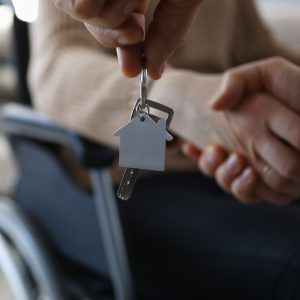Housing crisis is magnified for people with physical disabilities. Here’s how we can help.
 The U.S. housing crisis is worse for people with physical disabilities for two reasons. First, affordable housing is a challenge because people with physical disabilities are twice as likely to be low income. Second, accessibility is a challenge because significant and costly renovations are often required for people with physical disabilities.
The U.S. housing crisis is worse for people with physical disabilities for two reasons. First, affordable housing is a challenge because people with physical disabilities are twice as likely to be low income. Second, accessibility is a challenge because significant and costly renovations are often required for people with physical disabilities.
Those with physical disabilities are disproportionately impacted by the lack of accessible and affordable homes. Racist housing policies, coupled with a shortage of accessible homes and severely limited housing assistance, have made challenges worse for low income individuals with disabilities.
Even before the COVID-19 pandemic, millions of low income renters were experiencing or at high risk of experiencing housing instability.
- Individuals with disabilities are more likely to be extremely low income (ELI) renters and to experience higher rates of discrimination.
- The increase in ELI renters and the coming age wave will lead to an even greater need for economical and navigable housing in the coming years.
- ELI renters account for a quarter of all renter households, with nearly half of ELI households including an individual with a disability or an older adult.
- In 2018, 4 million renters with disabilities spent more than 50 percent of their monthly income on rent, mortgage, and utilities.
Understanding the housing crisis for low income individuals with physical disabilities
Policymakers need to address both the affordable housing crisis and the shortage of accessible housing for people with disabilities. Toward that end, this issue brief describes:
- The factors that are making housing challenges more difficult for individuals with physical disabilities.
- The role housing has on improving health outcomes and minimizing health costs.
- Best practices and policy levers that local, state, and federal governments can use to address the crisis.
Ways to increase housing for low income individuals with physical disabilities
- Universal design policies, regulatory reforms, and home modification initiatives can advance housing accessibility and affordability.
- Medicaid’s 1915(c) Home and Community-Based Services (HCBS) waivers and the CAPABLE model are effective.
- Increases in federal rental assistance for low income individuals with physical disabilities.